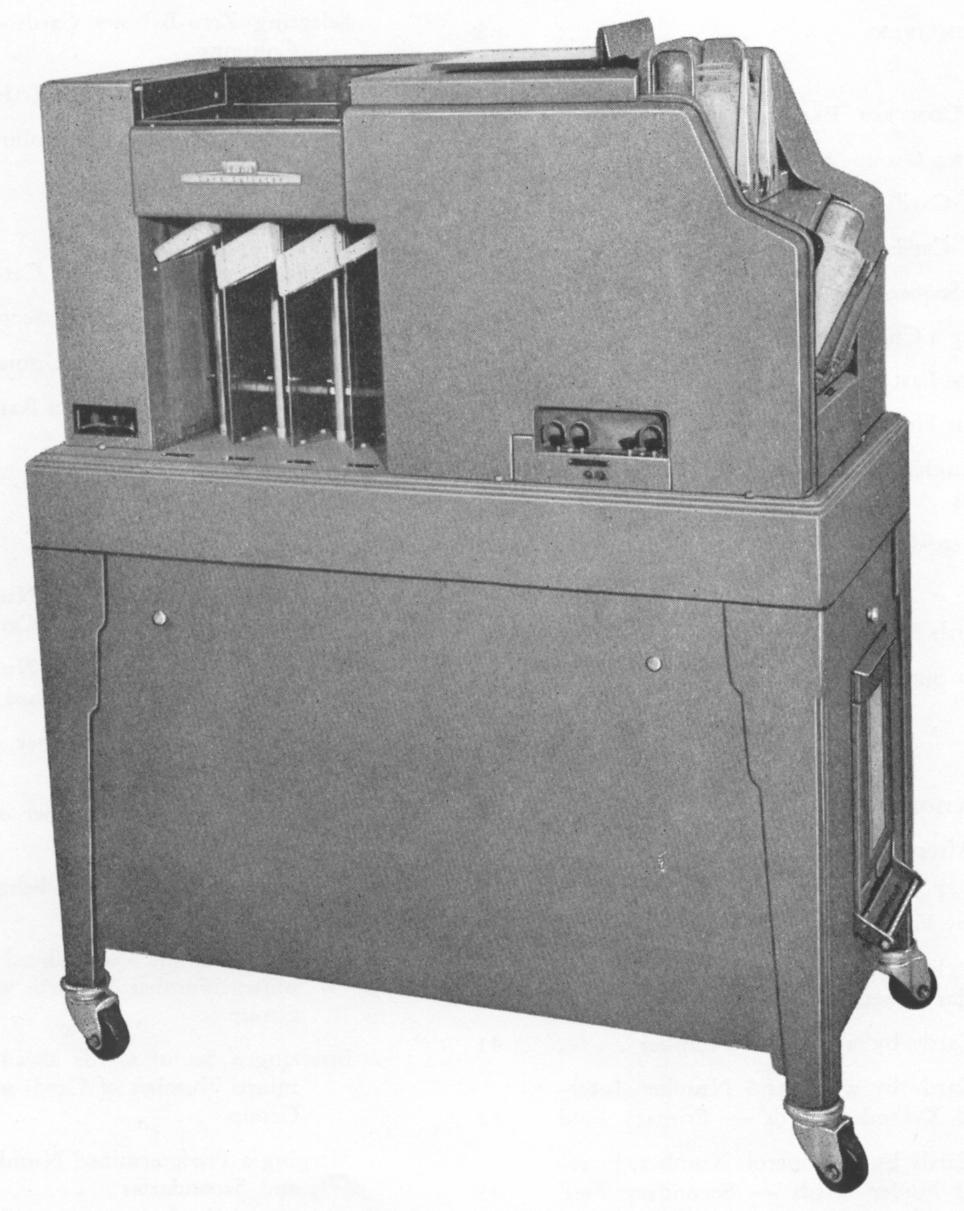IBM Collators
A collator is the opposite of a sorter. Where a sorter separates a deck of cards into lots of little piles, a collater shuffles separate decks together into one deck (or two, or three, or four). IBM first developed this device for the Social US Social Security Administration. H.J. McDonald, who sold the account and (along with John Bryce) designed the machine, recalls that IBM President Watson ordered the development of the collator because "the Social Security agency punched cards from records sent in by employers all over the country. There were millions and millions of them, and if we hadn't had some way of putting them together we would have been lost; we just couldn't have done it." The "world's biggest bookkeeping job"¹ was done in a Baltimore brick loft building, chosen because it had 120,000 square feet of floor space and was structurally strong enough to bear the weight of 415 punching and accounting machines. A production line was set up to punch, sort, check, and file half a million cards a day. The collator became a widely used device in government and business generally, and established the ability of the government to implement national programs in individual terms; e.g., the introduction of the withholding tax in 1943. [103].

A collator can be used to file new records (cards) into an existing card-based dataset (merging). Or to check sequence, remove duplicates, search for and extract desired records -- a kind of mechanical database query and update engine. It can even compare two decks so you can find out how they differ. As with all IBM card equipment (except key punches and sorters) the functions and details are specified by control-panel wiring.



- IBM Type 77 Collator - Manual of Operation, Form 22-3185-2 (May 1955).
- IBM 85 and 87 Collators - Reference Manual, Form A24-1003-2 (May 1960, Copyright 1958, 1960).
- IBM 188 Collator - Reference Manual, Form A24-1072-1 (1961).
- IBM 77 electric punched card collator (IBM history archive)
- IBM 85 collator (IBM history archive)
Translations of this page courtesy of...
| Language | Link | Date | Translator | Organization |
|---|---|---|---|---|
| Danish | Dansk | 2022-06-02 | Marcus Insgaard | Beste forbrukslån |
| Belarusian | Беларуская | 2023/08/22 | Vladyslav Byshuk | Владислав Бишук | studycrumb.com |
| Finnish | Suomi | 2022-12-27 | Johannes Hokkanen | Divafluence |
| French | Français | 2023/08/25 | Kerstin Schmidt | prothesiswriter.com |
| German | Deutsch | 2023/08/25 | Kerstin Schmidt | writemypaper4me.org |
| Italian | Italiano | 2023/08/31 | Kerstin Schmidt | admission-writer.com |
| Norwegian | Norsk (bokmål) | 2023/10/25 | Sondre | Regnr |
| Polish | Polski | 2023/08/25 | Kerstin Schmidt | justdomyhomework.com |
| Russian | Русский | 2023/08/22 | Vladyslav Byshuk | Владислав Бишук | skyclinic.ua |
| Spanish | Español | 2023/08/31 | Kerstin Schmidt | pro-academic-writers.com |
| Swedish | Svenska | 2023/08/31 | Kerstin Schmidt | writemyessay4me.org |
| Ukrainian | Українська | 2023/08/22 | Vladyslav Byshuk | Владислав Бишук | studybounty.com |